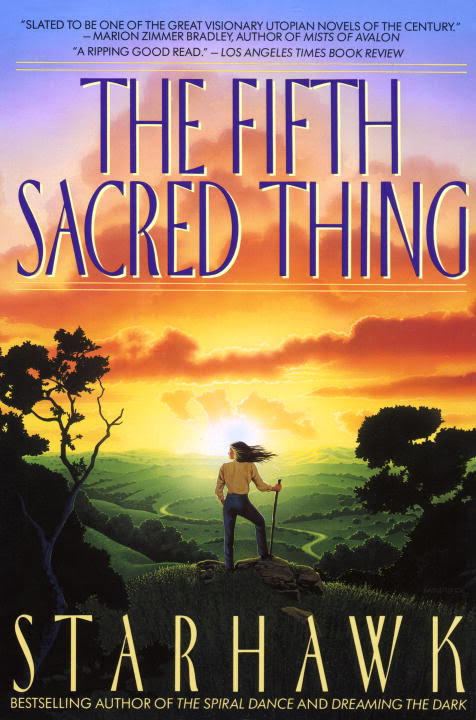8.4 /10 1 Votes8.4
Cover artist Keith Batcheller Publisher Bantam Pages 486 Page count 486 | 4.2/5 Goodreads Language English Publication date 1993 Originally published 1993 Genre Post-Apocalyptic fiction | |||||||||||||||||||||||||||||||||
 | ||||||||||||||||||||||||||||||||||
Media type Print (Hardcover, Trade Paperback & Mass Market Paperback) Awards Lambda Literary Award for LGBT SF/Fantasy/Horror, Lambda Literary Award for Science Fiction/Fantasy Similar Starhawk books, Anarchism books, Science Fiction books | ||||||||||||||||||||||||||||||||||
The Fifth Sacred Thing is a 1993 post-apocalyptic novel written by Starhawk. The title refers to the classical elements of fire, earth, air, and water, plus the fifth element, spirit, accessible when one has balanced the other four.
Contents
The fifth sacred thing kickstarter video captioned
Plot
The novel describes a world set in the year 2048 after a catastrophe which has fractured the United States into several nations. The protagonists live in San Francisco and have evolved in the direction of Ecotopia, reverting to a sustainable economy, using wind power, local agriculture, and the like. San Francisco is presented as a mostly pagan city where the streets have been torn up for gardens and streams, no one starves or is homeless, and the city's defense council consists primarily of nine elderly women who "listen and dream". The novel describes "a utopia where women are leading societies but are doing so with the consent of men." To the south, an overtly-theocratic Christian fundamentalist nation has evolved and plans to wage war against the San Franciscans. The novel explores the events before and during the ensuing struggle between the two nations, pitting utopia and dystopia against each other.
The story is primarily told from the points of view of 98-year-old Maya, her nominal granddaughter Madrone, and her grandson Bird. Through these and other characters, the story explores many elements from ecofeminism and ecotopian fiction.
Setting
In the utopia described in the novel, the streets have been dug up and are replaced with gardens and fruit trees. Additionally, every house is equipped with a small garden plot. The food is available to everyone and access to food is not limited by money, power, or ownership. Farms where the city's fruit and vegetables grow are hidden behind the blocks of homes. There is plenty of food and everyone is said to have more than enough to eat. The gardens are lined with streams that run throughout the city. The only remnants of the pavement that once existed are narrow paths meant for walking, cycling, or rollerblading. These paths are accented with colorful stones and mosaics. The city is depicted as a beautiful town where everything is shared yet nothing is lacking.
Prequel and sequel
A prequel, Walking to Mercury (ISBN 0-553-10233-8), was released in 1997. A sequel, City of Refuge (ISBN 978-0996959506), was released in 2016 following a Kickstarter campaign by the author.
